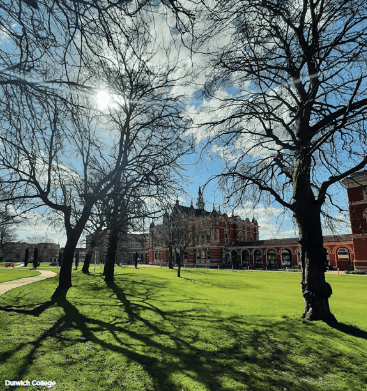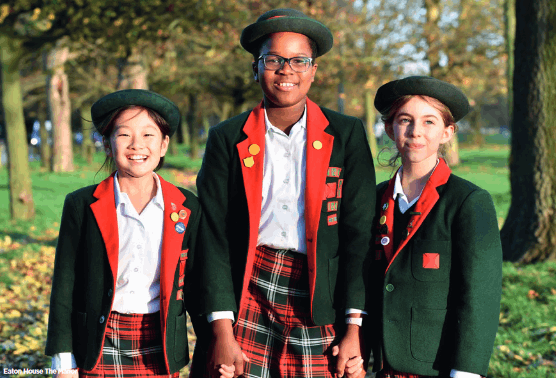Menu
Schools are extremely conscious of the pressure parents are under to find private school fees and are extending the range of help on offer, says Gillian Upton
With cost per term soaring to as much as £8,000 for day pupils and almost twice that per term for boarders, it’s no wonder that many parents are having to think hard about how to find the fees.
There is no doubt that the financial commitment is daunting. Adding up the total cost of private education from reception to sixth form is an eye-watering figure. Research from think tank Civitas reckons it would cost £217,000 to send a child to an independent day school from the ages of four to 18. If fees continue to increase at a similar rate to the last decade that figure would rise to nearer £300,000.
According to their research, day school fees have risen by 77% in real terms since 2000. Boarding fees are little better, having risen by 66% over the same period after adjusting for inflation.

But find the fees parents do, judging by the fact that pupil numbers are up 1.6% across the independent schools’ sector, with the largest increase of 2.2% in the south-east of the country.
Why? “The independent sector delivers value,” explains Julie Robinson, Chief Executive of the Independent Schools Council (ISC). “If it didn’t parents wouldn’t waste their money,” she says.
Schools are acutely aware of the cost of living crisis impacting teachers and parents when fixing 2023/24 fee hikes and staff pay, and have pitched the former between 6-7% on average for this next academic year. Some schools have increased by more, namely Dulwich College by 7.5%, Whitgift by almost 10% and Trinity increasing from £20,437 to £22,685 which is 11%. Last year’s average fee increase was 5.6%. Surprisingly some schools, namely Wandsworth Prep and the Hampshire School Chelsea, have retained 2022 fees for this academic year. Wandsworth Prep stays at £5,165 per term.
Schools are tackling a perfect storm of events: rampant inflation which is just starting to slow down, petrol prices, and the increasing cost of teachers’ pension schemes (TPS) which has forced several hundred independent schools to withdraw from TPS to control staff benefits packages. On top of that is Labour’s threat of putting 20% VAT on school fees from 2025, predicated on them winning the election and with a big enough majority to be able to do so. “Schools are alert to the VAT issue and will mitigate the hike; fees won’t necessarily go up by 20%,” reckons ISC’s Robinson. “The trend is for schools to do as much as they can.” Lastly, schools are struggling to recruit staff in such a competitive labour market.
Trinity, for example, has postponed planned major capital work on new classrooms to help them through the period of high energy costs. “Our staff body remains the most important element in shaping the experience of our students day-to-day, and we want the best teachers to come to Trinity and to stay here. In the current climate there is a particularly competitive market for teacher recruitment, and we must be able to reward and retain
the right people,” says Alasdair Kennedy, Headmaster at Trinity School, Croydon.
APPLYING FOR A BURSARY
• Identify the three or four schools you feel would be the best fit for your child – for example, do you want a school whose philosophy is to welcome families from many different and interesting backgrounds?
• Before visiting the schools and registering your child, explore the websites for details of their bursaries offer ie. means-tested awards that pay all or part of the fees.
• Many schools share full details about how many bursaries are awarded every year, eligibility criteria (eg. household income and assets), the range of bursaries on offer (from 10% to 100%), what extras are included (eg. uniform, lunches, trips), and how to apply.
• If your child is academically very bright, they might also be awarded a scholarship after sitting the entrance examinations in addition to a meas-tested bursary.
• Always contact the registrars with any questions; they will be happy to advise.
Source: Dulwich College
Incremental income streams such as building hire help ameliorate schools’ rising fixed overheads, but these have been decimated over the pandemic and are only just recovering. One school looking forward to this new income stream is Thames Christian School, having moved into a new building in February 2022. Apart from providing a fabulous facility for the school’s regular performing arts group and holiday acting and dance courses, the school has secured a church booking every Sunday morning from Hillsong South West.
Schools are actively working to increase the fee assistance they offer and more generous bursaries are the big winner, some at 75% and 100%, plus easier payment terms for those paying fees to help spread the cost.
Whitgift offers a range of payment terms, including termly, monthly or spread across payment plans and the fee office spends “lots of time talking and re-packaging,” says Head Chris Ramsey. London Park School offer a monthly direct debit option.
Eaton House the Manor is another school which offers easier payment terms, specifically a monthly payment scheme. Finton House School started offering monthly direct debits pre-pandemic “having seen affordability as a potential long-term issue,” explained the school’s bursar.
It’s worth checking the website of the London Fee Assistance Consortium (LFAC), which lists 33 member schools offering free and subsidised places to children with the potential to excel. The list comprises both single sex and co-ed schools. It may be a bursary, scholarship, assisted place or sponsored award although bursaries and scholarships remain the most popular forms of support. Among the member schools are Alleyn’s, Emanuel, Godolphin and Latymer, KCS, Knightsbridge School, Newton Prep, Putney High School GDST and St Paul’s.

“Thousands of young people benefit from financial support – in many cases fully-funded places – that allows them to flourish in our schools,” says Michael Bond, Chair of LFAC.
The big transformational bursaries are going up this year. According to ISC figures, the total value of means-tested bursaries and scholarships countrywide is £483m, as at January 2023, which is a 4.1% increase on the previous year. The average bursary now stands at £11,800 pa.
Bursaries take account of full family circumstances and are aimed squarely at fostering greater social mobility and cohesion. The 100% bursaries take all the pain away so, for example, at Wimbledon High, they include the cost of uniforms, laptops, school trips, music lessons, rowing clubs and so on.
London Park Schools plan to offer bursaries in the future, funded through a Dukes Fund that will cover more than just the fees, such as the cost of trips to universities.
“Widening access to a Woldingham education through funded places nurtures diversity and inclusion within our thriving school community,” says Camilla Mair, Foundation Director at Woldingham. “They have a lifelong impact on students and their families. Woldingham bursary students have a strong work ethic, drive and passion for learning. Many achieve positions of responsibility such as Head Girl or Ribbon and go on to Oxbridge and other top universities. Five of our nine most recent head girls have been bursary recipients, demonstrating the enormous impact and opportunity a funded place at Woldingham affords.”
The school’s development team has a long-term goal of providing 30 100% bursaries by 2030. Emanuel set a goal of reaching 43 bursaries in its 430th anniversary year in 2024 and “have exceeded that,” says Tammy Parks, Acting Head of Admissions, “with 54 pupils for 2022 entry and 51 pupils for 2023 entry.”
Alleyn’s is on the same path, explains Claire Morgan CFO: “We are delighted that 10% of our pupils are bursary recipients, who enter at 11+ or 16+. We will have more next year than ever before and, in the longer term, we’d like to double the number. We’re very lucky that a number of bursaries are funded by the Dulwich Estate as well as by the Worshipful Company of Saddlers and other donors.”

Dulwich College provides one of the most generous bursary schemes, with 220 pupils on bursaries this year up from 214 last year, funded by a £4.4m bursary pot. “Dulwich bursaries are funded by the generosity of The Dulwich Estate and philanthropic giving, and from income from our commercial operations and overseas schools,” explains Dr Cameron Pyke. The majority are offered on entry to Year 7 (11+) and are usually 75% and 100% bursaries.
The College has a strong commitment to growing that number. “Our ultimate aim is to be need-blind,” says Dr Pyke.
The push on means-tested bursaries means that scholarships have shrunk to an average of 10% at most schools but not to be scoffed at if your child excels in art, music, sport and academically. Wimbledon High, for example, offers scholarships at three points of entry 11+, 13+ (Year 9) and Sixth Form, with discounts of between 5-20%.
The ‘state ‘til eight’ route is a popular way to ease the financial burden for those who see the full schooling run as being a stretch too far. Negotiating an early inheritance from grandparents is another possibility.
Alternatively, start saving by arranging a savings plan with a finance company as that will soften the blow. Brokering a second charge mortgage on your home over a long term is another route to consider.
All schools advise parents to be proactive and approach them for a conversation on fees. “We hold several open events for families who are considering a bursary application which, among other things, involves some help and support with our interview and group experience process,” explains Emanuel’s Parks. Remember that all schools are focused on helping you, but you do need to ask.